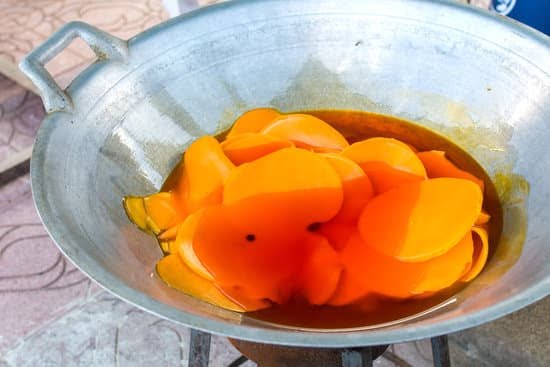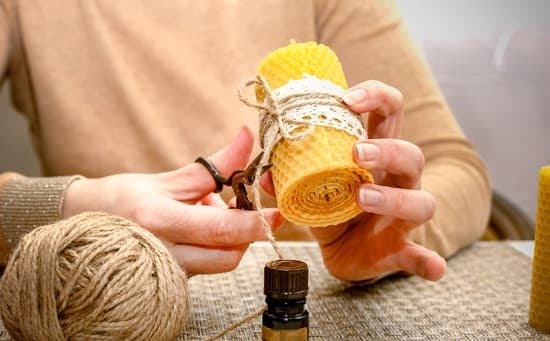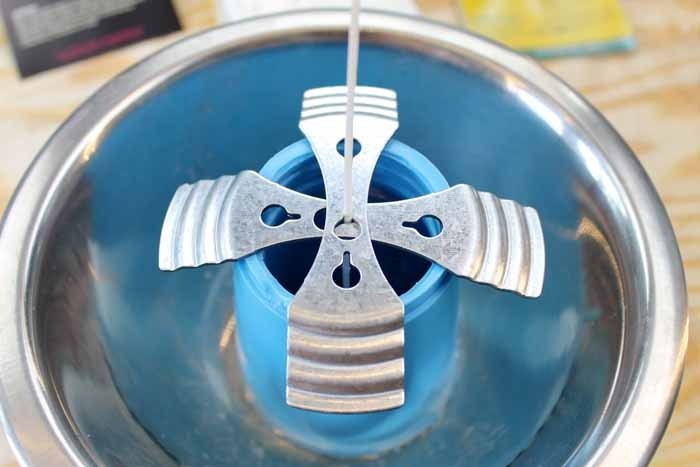Making candles frosting occurs when the surface of a candle appears to have a white, powdery coating, resembling frost on a windowpane. This natural process can affect the overall appearance of your candles and is caused by various factors such as temperature, wax type, and ingredient quality. In this section, we will delve into the science behind candle frosting, common causes, and how to prevent it from happening.
Candle frosting is a common occurrence in homemade and store-bought candles alike. When exposed to drastic temperature changes or when certain additives are present in the wax, it can lead to the development of this frost-like appearance. Understanding why candle frosting happens is essential for anyone looking to create high-quality candles, whether for personal use or as part of a business venture.
In this article section, we will explore not only the reasons behind candle frosting but also provide valuable insights into the science behind this phenomenon. We will delve into how temperature and ingredient quality play crucial roles in affecting the outcome of your candles. Additionally, we will discuss strategies on choosing the right wax and additives for minimizing frosting issues, allowing you to create beautifully finished candles every time.
Common Causes of Candle Frosting and How to Prevent It
Candle frosting is a common issue that many candle makers encounter. It occurs when the wax cools and forms a white, powdery layer on the surface of the candle, giving it a frosted appearance. While some people may find this aesthetic appealing, others may see it as a defect. Understanding the causes of candle frosting and how to prevent it can help you create beautiful, high-quality candles.
Common causes of candle frosting include:
1. Rapid cooling: When the wax cools too quickly, it can result in frosting. To prevent this, try to cool your candles at room temperature or in a controlled environment.
2. Low-quality wax: Using low-quality or improper wax for your candles can lead to frosting. Be sure to use high-quality wax that is specifically designed for candle making.
3. Temperature fluctuations: Sudden changes in temperature during the cooling process can cause frosting. Keep your candles in a stable and consistent environment while they are setting.
To prevent candle frosting, consider the following tips:
– Use a thermometer to monitor the temperature of your wax and ensure it is within the recommended range for cooling.
– Choose high-quality wax and additives that are designed to minimize frosting.
– Allow your candles to cool at room temperature or in a controlled environment to avoid rapid cooling.
By understanding the common causes of candle frosting and following these prevention tips, you can create beautiful, smooth candles without unsightly frosting.
The Science Behind Candle Frosting
Understanding the science behind candle frosting is crucial for any candle maker looking to minimize or enhance this natural occurrence. Candle frosting happens when the wax cools down too quickly, causing small crystals to form on the surface of the candle. This phenomenon is more common in natural waxes like soy and coconut due to their lower melting points.
The temperature at which you pour your wax plays a significant role in determining whether frosting will occur. If the ambient temperature is too cold, the wax will cool rapidly and result in frosting. On the other hand, pouring wax at too high of a temperature can also lead to frosting because it will take longer for the wax to solidify. The quality of your ingredients can also impact frosting, with impurities or added fragrances potentially contributing to its occurrence.
To minimize frosting, it’s essential to control the pouring temperature and ensure that your work area is at an optimal temperature. Additionally, using high-quality waxes and additives can help reduce the likelihood of frosting occurring in your candles. Understanding how these factors interact will allow you to create candles with a smooth, glossy finish.
| Cause | Preventative Measure |
|---|---|
| Cool Environment | Work in a warmer area or use a heat gun to warm mold before pouring |
| Impurities in Wax | Use high-quality, refined wax from trusted suppliers |
| Pouring Temperature | Ensure proper pouring temperatures based on type of wax being used |
Choosing the Right Wax and Additives for Minimizing Frosting
When it comes to minimizing frosting on your candles, choosing the right wax and additives is crucial. The type of wax and additional ingredients you use can significantly impact the occurrence of frosting and the overall quality of your candles. Here are some factors to consider when selecting the right wax and additives to minimize frosting:
- Wax Type: Not all waxes are created equal when it comes to frosting. Soy wax, for example, is known for its tendency to produce frosting due to its natural composition. On the other hand, paraffin wax is less prone to frosting, making it a good choice for those looking to minimize this issue.
- Additives: Certain additives can help reduce the likelihood of frosting in candles. Adding vybar or stearin to your wax can improve opacity and reduce the appearance of frost. These additives can also aid in better scent throw and improved burn qualities.
- Fragrance Oils: The type and quality of fragrance oils used in candle making can also influence frosting. Some fragrance oils have a higher likelihood of causing frosting, so it’s essential to select high-quality oils from reputable suppliers.
In addition to choosing the right wax and additives, proper blending and pouring techniques play a significant role in minimizing frosting. Ensuring that your wax is heated and cooled at the correct temperatures, as well as using appropriate pouring techniques, can help reduce the occurrence of frosting in your candles.
Overall, selecting the right combination of wax, additives, and fragrance oils is essential for minimizing frosting in candle making. By understanding how each element contributes to the final outcome, you can create high-quality candles with minimal frosting issues while still achieving beautiful results.
Testing and Troubleshooting
Identifying Frosting Issues
One of the first steps in testing and troubleshooting candle frosting is being able to identify the issue. Frosting can manifest in different forms, including a powdery white coating or a dull, matte finish on the surface of the candle. It’s important to carefully examine your candles after they have fully cooled to determine if any frosting has occurred. Additionally, conducting tests by burning the candles in different environments and conditions can help reveal any underlying frosting problems.
Fixing Frosting Problems
Once you’ve identified frosting issues in your candles, it’s time to take action to fix them. Depending on the cause of the frosting, there are several potential solutions that can be implemented. For example, adjusting the pouring temperature or using additives such as stearic acid can help minimize frosting. Additionally, experimenting with different waxes and wicks may also contribute to reducing or eliminating frosting problems in your candles.
Preventing Future Frosting
In addition to fixing existing frosting issues, it’s important to take measures to prevent future occurrences. This may involve fine-tuning your candle making process by controlling factors such as temperature and humidity during production.
Investing in high-quality ingredients and conducting thorough testing prior to mass production can also help ensure that you produce consistently beautiful, frost-free candles. By implementing these preventative measures and learning from past troubleshooting experience, you can significantly reduce the likelihood of encountering frosting issues in your candles moving forward.
Enhancing Candle Frosting for Aesthetic Appeal
Using Different Wax Blends for Varied Frosting Effects
When it comes to enhancing the aesthetic appeal of candle frosting, one approach to consider is using different wax blends. The type of wax used can greatly affect the outcome of the frosting. For example, soy wax tends to produce a more pronounced and visually appealing frosting effect compared to other types of wax.
Additionally, experimenting with blends of different waxes can also lead to unique and beautiful frosting patterns. By combining soy wax with other additives or paraffin wax, you can create candles with stunning and intricate frosting designs.
Utilizing Dye and Fragrance Oils to Accentuate Frosting
Another effective way to enhance the aesthetic appeal of candle frosting is by utilizing dye and fragrance oils strategically. Adding a small amount of dye or incorporating colored layers into your candles can emphasize the frost patterns, making them stand out even more.
Moreover, selecting fragrance oils that complement the appearance of the frosting can add another dimension to your candles’ visual appeal. For instance, using light-colored dyes and floral fragrances can create a delicate and alluring aesthetic in candles with noticeable frosting.
Applying Decorative Techniques for Eye-Catching Frosting Designs
To further elevate the aesthetic appeal of candle frosting, consider applying decorative techniques during the cooling process. For instance, gently swirling the surface of the candle while it’s still soft can create mesmerizing patterns as the frosting forms.
Another option is using tools or objects to create unique textures or shapes in the frosted layer before it fully solidifies. These decorative techniques not only enhance visual interest but also add a personalized touch to each candle’s appearance, making them truly one-of-a-kind pieces.
Embracing Candle Frosting
When it comes to making candles, frosting can sometimes be seen as an undesirable outcome. However, many candle makers have learned to embrace this natural process and use it as a unique design element in their candles. Instead of trying to eliminate frosting altogether, some artisans have found creative ways to incorporate it into their candle designs for a stunning visual effect.
One way to embrace candle frosting is by using different types of wax and additives that are known for producing beautiful frost patterns. For example, soy wax is known for its tendency to frost, and some candle makers intentionally choose this type of wax to enhance the overall look of their candles. Additionally, adding certain types of oils or butters can also contribute to the formation of intricate frost patterns on the surface of the candle.
Another approach to incorporating frosting into candle designs is by experimenting with different pouring and cooling techniques. By manipulating the temperature at which the wax is poured and allowing it to cool at varying rates, candle makers can achieve unique frosting effects that add depth and character to their creations. This trial-and-error process often leads to unexpected results that are both visually appealing and distinctive.
Furthermore, embracing candle frosting opens up opportunities for artistic expression in candle making. Some artisans have discovered innovative ways to accentuate and highlight the natural beauty of frosting by incorporating color dyes, botanical elements, or even glitter into their candles. By strategically placing these elements within the frosted areas, they are able to create one-of-a-kind designs that captivate customers and elevate the overall aesthetic appeal of their products.
| Unique Ways | Incorporating Frosting |
|---|---|
| Different types of wax | Enhancing overall look |
| Pouring and cooling techniques | Achieving unique effects |
| Artistic expression | Color dyes, botanical elements, glitter |
DIY Candle Frosting Techniques
In conclusion, candle frosting is a natural and common occurrence in the world of candle making. While it may be frustrating for some beginners, understanding the causes and science behind candle frosting can help prevent and mitigate its effects. By choosing the right wax and additives, maintaining optimal temperatures during the cooling process, and experimenting with different techniques, candle makers can minimize frosting and even enhance it for aesthetic appeal.
It’s important to remember that while candle frosting is often seen as a flaw, many experienced candle makers have embraced it as a unique design element. By incorporating frosting into their designs or enhancing it to create beautiful patterns, they have turned what was once considered a nuisance into an opportunity for creativity. This highlights the versatility and potential of candle frosting in creating distinctive and eye-catching candles.
For those looking to enter the world of DIY candle making, learning about different techniques for achieving the perfect frosting effect is essential. By following step-by-step instructions and testing various methods, beginners can gain valuable experience in managing and enhancing candle frosting.
With time and practice, they can develop their own signature style that sets their candles apart in both quality and visual appeal. And remember, don’t be discouraged by initial challenges – with patience and perseverance, mastering the art of candle frosting is well within reach.
Frequently Asked Questions
What Causes Frosting When Making Candles?
Frosting in candles is caused by the natural process of crystallization of the wax as it cools and solidifies. This happens when the wax is exposed to changes in temperature, causing the formation of tiny crystal structures on the surface of the candle.
How Do You Stop Candle Frosting?
To prevent or minimize candle frosting, you can try using a different type of wax, such as paraffin or soy wax, which are less prone to frosting than other types. You can also try pouring your candles at a slightly higher temperature or using a heat gun to smooth out any visible frosting after the candle has cooled.
Why Is My Candle Frosting After Burning?
Candle frosting after burning can happen due to a few reasons, such as the quality of the wax used, rapid changes in temperature during burning, or if the candle was exposed to drafts or cold air while burning.
In some cases, frosting after burning may not be entirely preventable, but using good quality waxes and minimizing sudden temperature changes can help reduce it.

Welcome to my candle making blog! In this blog, I will be sharing my tips and tricks for making candles. I will also be sharing some of my favorite recipes.





